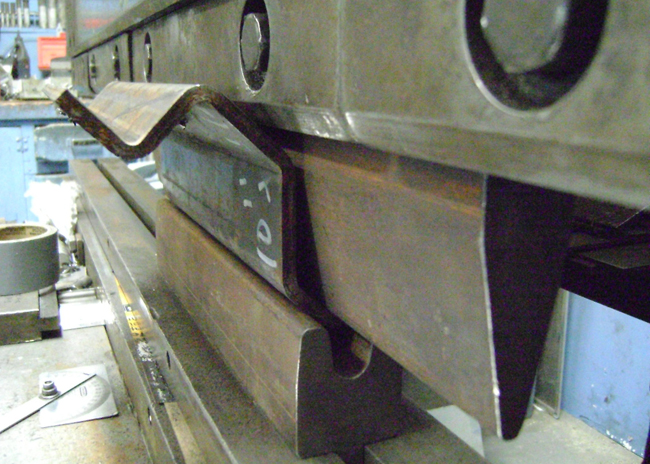(By Loren Krussow) – If you’re anything like me, the first time you took a hammer to a piece of sheetmetal intending to make something out of it you were a little miffed at the result. On one hand you might have been impressed with the way you might get a useful part out of a straight sheet, on the other hand…wow did it look awful. It’s safe to say that many people give it another try or two and then join the ranks of those who believe that metal forming is a black art and not for them.
As much as you can do magic with a few well-placed hammer blows, you can also make a ruinous mess. Stretching is the first thing that happens to metal when hit with the impact of a hammer, and the repeated impacts that may be required to get a bend to “come around” are likely to create enough distortion that you may need to come back with lots of additional hammer work to straighten things out. Or a grinder and some filler may be involved.
What is really best when forming sheetmetal is a smooth, even pushing action across the bend, not an isolated impact, and this is where more specialized tools come in. At the most basic, you can clamp a piece of sheet into a vice and place a block of wood on the exposed section, then hit the wood with a hammer to get a more even force across the bend. Better yet is to have access to an actual sheetmetal bending tool called a hand brake, which in effect does the same thing: a portion of the sheet is clamped between two plates, then an additional bar swings up to push on the material and bend it over the edge of the upper plate. These useful and relatively inexpensive devices can vary from a bench-top model which weighs a few pounds or a ten-foot-long floor unit weighing a ton, but all are hand-operated via levers.
For production work and where greater precision is required, a better answer is to have a powered “press brake” version of an industrial press, with a long bed and an upper jaw into which forming dies can be clamped, then squeezed together by mechanical or hydraulic means. These devices are used around the world for bending of things like electronics chassis and cabinet doors, can bend heavier plate, and are extremely versatile if a bit expensive. And they bite! Only skilled and careful operators need apply…before the days of safety emphasis, it was common for older guys to be missing a finger-or-two as a reminder of the day they showed up to work with a less-than-optimum attention level.
When my machinery dealer called to say a medium-sized, used press brake had come in and he could get me lease-to-own terms, I was both happy and apprehensive. I wanted it bad but would be risking that I could get enough contract work to pay for it. As it happens, things worked out and it’s been a favorite machine ever since. I’ve probably run tens of thousands of cycles on it and it’s never skipped a beat. You can imagine that I’ve formed plenty of my own (and friend’s) car parts such as the steering box relocation bracket shown, as well as paying jobs. With 45 tons of force available, I have also never argued with it.
We still get out the ol’ hammers often enough however, even with the press brake around they are never lonely for long.
























